
Gilgit: Gateway to the Majestic Northern Pakistan
Discover Gilgit: The Gateway to Northern Pakistan's Stunning Landscapes and Rich Cultural Heritage.
Nestled in the heart of northern Pakistan, Gilgit is a city of exceptional natural beauty and cultural richness. As the capital of the Gilgit-Baltistan region, it serves as a hub for adventurers and travelers looking to explore the breathtaking landscapes of the Karakoram Range. The city is surrounded by towering peaks, verdant valleys, and crystal-clear rivers that offer a sense of serenity and excitement. Gilgit is also the starting point for some of the most famous trekking routes, including the path to K2, the second-highest mountain in the world. The cultural tapestry of Gilgit is as vibrant as its landscapes. The local bazaars are filled with colorful handicrafts, traditional attire, and a variety of local foods that reflect the rich heritage of the region. One can also witness the unique blend of cultures and traditions through the many festivals and cultural events that take place throughout the year. The people of Gilgit are known for their warm hospitality, making visitors feel welcome and at home. In addition to its natural and cultural allure, Gilgit offers a range of activities for tourists. From river rafting in the Gilgit River to exploring ancient Buddhist rock carvings, there's something for everyone. The city also provides various accommodation options, from cozy guesthouses to more luxurious hotels, ensuring a comfortable stay for all visitors. Whether you're an adventure seeker, a culture enthusiast, or someone looking to escape the hustle and bustle of city life, Gilgit promises a memorable experience.
Local tips in Gilgit
- Visit during the spring or autumn for the best weather and clear views of the mountains.
- Always carry some local currency, as ATMs are not widely available.
- Dress modestly and respectfully, in line with local customs and traditions.
- Hire a local guide for trekking and exploring remote areas to ensure safety and enrich your experience.
- Try the local cuisine, especially dried apricots and walnut cakes, which are regional specialties.
Gilgit: Gateway to the Majestic Northern Pakistan
Nestled in the heart of northern Pakistan, Gilgit is a city of exceptional natural beauty and cultural richness. As the capital of the Gilgit-Baltistan region, it serves as a hub for adventurers and travelers looking to explore the breathtaking landscapes of the Karakoram Range. The city is surrounded by towering peaks, verdant valleys, and crystal-clear rivers that offer a sense of serenity and excitement. Gilgit is also the starting point for some of the most famous trekking routes, including the path to K2, the second-highest mountain in the world. The cultural tapestry of Gilgit is as vibrant as its landscapes. The local bazaars are filled with colorful handicrafts, traditional attire, and a variety of local foods that reflect the rich heritage of the region. One can also witness the unique blend of cultures and traditions through the many festivals and cultural events that take place throughout the year. The people of Gilgit are known for their warm hospitality, making visitors feel welcome and at home. In addition to its natural and cultural allure, Gilgit offers a range of activities for tourists. From river rafting in the Gilgit River to exploring ancient Buddhist rock carvings, there's something for everyone. The city also provides various accommodation options, from cozy guesthouses to more luxurious hotels, ensuring a comfortable stay for all visitors. Whether you're an adventure seeker, a culture enthusiast, or someone looking to escape the hustle and bustle of city life, Gilgit promises a memorable experience.
When is the best time to go to Gilgit?
Iconic landmarks you can’t miss
Baltit Fort Hunza
Explore the rich history and stunning views at Baltit Fort in Hunza, a majestic fort steeped in culture and natural beauty.

Rakaposhi View Point Hotel & Restaurant
Experience the stunning views of Rakaposhi at this enchanting hotel and restaurant in Ghulmet, where nature meets culinary excellence.

Altit Fort
Explore the rich history and stunning views at Altit Fort, an ancient marvel nestled in the breathtaking Hunza Valley of Gilgit-Baltistan.

Deosai National Park
Experience the breathtaking landscapes and rich biodiversity of Deosai National Park, a true gem in Pakistan's northern wilderness.

Attabad Lake
Discover the serene beauty of Attabad Lake in Hunza, a turquoise jewel nestled amidst majestic mountains, perfect for adventure and relaxation.

Indus Lodges Gilgit
Discover the serene beauty and local flavors at Indus Lodges Gilgit, your gateway to the stunning landscapes of Gilgit-Baltistan.

Raikot Bridge
Explore Raikot Bridge, a breathtaking architectural gem on the Karakoram Highway, offering stunning views and a rich cultural experience in Gilgit-Baltistan.

Rupal Inn
Discover the beauty of Gilgit-Baltistan at Rupal Inn, where comfort meets local culture amidst stunning landscapes.
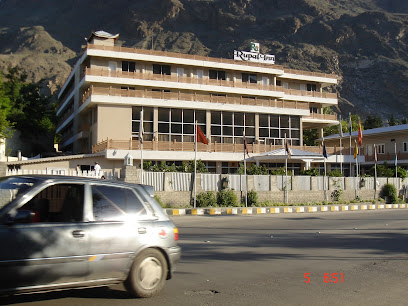
Kharphocho Fort
Explore the historic Kharphocho Fort in Skardu, a breathtaking fortress offering panoramic views and rich history in the heart of Gilgit-Baltistan.

Welcome to Passu
Discover the breathtaking landscapes and rich culture of Passu, a hidden gem in Gilgit-Baltistan, perfect for adventure seekers and nature lovers.

Gilgit Airport
Experience the stunning beauty of Gilgit Airport, your gateway to the majestic landscapes of Gilgit-Baltistan and the Karakoram mountains.

Basho Valley (Sultanabad Medow)
Explore the serene beauty of Basho Valley, a hidden gem in Skardu, offering breathtaking landscapes and unforgettable adventures.

The CherryTree Café
Discover the flavors of Gilgit at The CherryTree Café, where local cuisine and a warm atmosphere come together for a delightful dining experience.

Sarfaranga Cold Desert Shigar
Explore the serene beauty of Sarfaranga Cold Desert, a unique tourist attraction in Skardu, Pakistan, offering stunning landscapes and adventure.

Manthal Buddha Rock
Explore the ancient carvings and breathtaking landscapes of Manthal Buddha Rock, a historical landmark in Skardu, Gilgit-Baltistan.

Unmissable attractions to see
Baltit Fort Hunza
Discover the historical allure and breathtaking views of Baltit Fort in Hunza Valley, a cultural gem nestled amid majestic mountains.

Rakaposhi View Point Hotel & Restaurant
Experience the stunning views of Rakaposhi while indulging in local cuisine at Rakaposhi View Point Hotel & Restaurant in Ghulmet.
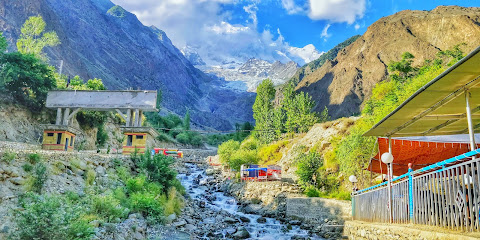
Altit Fort
Explore Altit Fort in Hunza, a historical gem with stunning views and rich cultural heritage, ideal for history buffs and nature lovers alike.

Kharphocho Fort
Explore the historical Kharphocho Fort in Skardu, a breathtaking fortress with panoramic views and rich heritage in Gilgit-Baltistan.

Eagle’s Nest Point
Experience breathtaking views at Eagle's Nest Point in Hunza Valley, a must-visit destination for nature lovers and adventure seekers.

Hussaini Suspension Bridge
Discover the exhilarating Hussaini Suspension Bridge, an iconic adventure destination in Gojal, Gilgit, offering breathtaking views and a thrilling experience.

Sarmad Shafa Snow Leopard Sanctuary
Experience the breathtaking beauty and wildlife conservation efforts at Sarmad Shafa Snow Leopard Sanctuary in Naltar Valley, Gilgit-Baltistan.

The Three Mountains Junction View Point
Discover the breathtaking beauty of The Three Mountains Junction View Point in Gilgit-Baltistan, where three majestic ranges meet in a stunning panorama.

GDA Family Park Gilgit
Discover the serene beauty of GDA Family Park in Gilgit, where nature and relaxation converge amidst breathtaking views of the Gilgit River.

Patundas Meadows
Discover the breathtaking Patundas Meadows in Hunza, Pakistan, where nature's beauty meets adventure in a serene landscape.

Duiker Hill
Experience the stunning panoramic views of the Karakoram Range at Duiker Hill in Hunza Valley, a serene escape into nature's breathtaking beauty.

Haramosh Valley
Explore the breathtaking beauty of Haramosh Valley, a hidden gem in Gilgit-Baltistan, perfect for adventure seekers and nature lovers.

Jutial Barmus Trail
Discover the stunning vistas and serene landscapes of Jutial Barmus Trail, a must-visit hiking destination in Gilgit-Baltistan.

Babusar Top, Diamer, Gilgit Baltistan, Pakistan
Discover the stunning vistas and rich culture at Babusar Top, a premier tourist attraction in Gilgit Baltistan, Pakistan.

Bab-e-Chilas
Discover the breathtaking landscapes and cultural richness at Bab-e-Chilas, a must-visit tourist attraction in the heart of Gilgit-Baltistan.

Essential places to dine
Paradise Hotel & Restaurant, Gilgit
Discover culinary delights at Paradise Hotel & Restaurant in Gilgit – where exquisite flavors meet stunning river views.
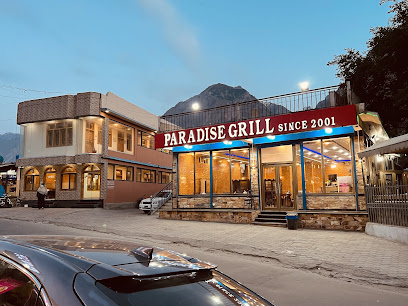
Pizza King GB
Savor delicious pizzas at Pizza King GB in Gilgit-Baltistan – where every slice is a taste of local flavor!

Glacier Breeze
Discover culinary delights at Glacier Breeze in Passu – where exquisite apricot cakes meet breathtaking mountain views.

Chai Corner
Experience authentic Pakistani cuisine and warm hospitality at Chai Corner in Gilgit-Baltistan.

Dawat Restaurant
Discover the flavors of Gilgit-Baltistan at Dawat Restaurant, where delicious food meets breathtaking views.

The Food Corridor
Discover the vibrant flavors of Pakistan at The Food Corridor in Gilgit - a must-visit dining destination for food lovers.

Gilgit Food Yard
Discover authentic flavors at Gilgit Food Yard – where local cuisine meets breathtaking views in Gilgit-Baltistan.

HAPPY HOUR
Savor exquisite flavors amidst stunning mountain views at Happy Hour Restaurant in Gilgit-Baltistan.

Pakiza hotel and Restaurant
Experience the essence of Gilgit-Baltistan at Pakiza Hotel and Restaurant—where authentic cuisine meets stunning mountain views.

Raja mamtu corner
Experience the authentic flavors of Gilgit-Baltistan at Raja Mamtu Corner – a culinary gem known for its unique taste and vibrant atmosphere.

PIZZA XPRESS
Discover Pizza Xpress: Your go-to spot for authentic Italian pizza in Jutial, Gilgit-Baltistan's culinary scene.

Café Mulberry Shades
Discover Café Mulberry Shades in Gilgit – where culinary delights meet breathtaking river views for an unforgettable dining experience.
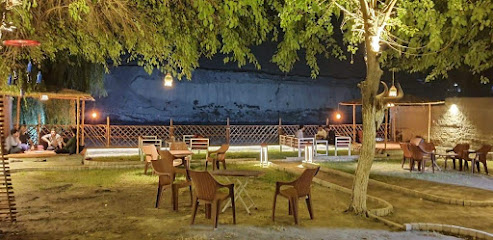
Shandoor Hotel & Restaurant
Experience authentic flavors at Shandoor Hotel & Restaurant in Gilgit-Baltistan - where every meal is complemented by stunning mountain views.

Gilgit Hujra Restaurant
Experience authentic Pakistani cuisine with stunning river views at Gilgit Hujra Restaurant in beautiful Gilgit-Baltistan.

Chacha Chai Gilgit
Experience authentic Pakistani cuisine and warm hospitality at Chacha Chai Gilgit, set against breathtaking mountain views.
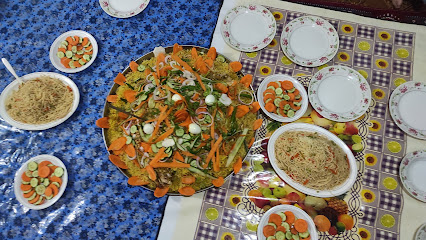
Markets, malls and hidden boutiques
Hoper General Store
Experience the charm of Hoper General Store in Gilgit, offering a delightful selection of local goods and a warm, welcoming atmosphere.

Ali General Store Puniyal Road Gilgit
Explore Ali General Store in Gilgit for unique home goods reflecting local culture and practical essentials for your travel needs.

Gilgit Hunza Arts & Crafts International
Discover the essence of Gilgit-Baltistan's craftsmanship at Gilgit Hunza Arts & Crafts International, where tradition meets creativity in every unique piece.

Hunza Bazar
Discover the essence of Gilgit-Baltistan at Hunza Bazar, where local crafts and culture come alive in a vibrant marketplace.
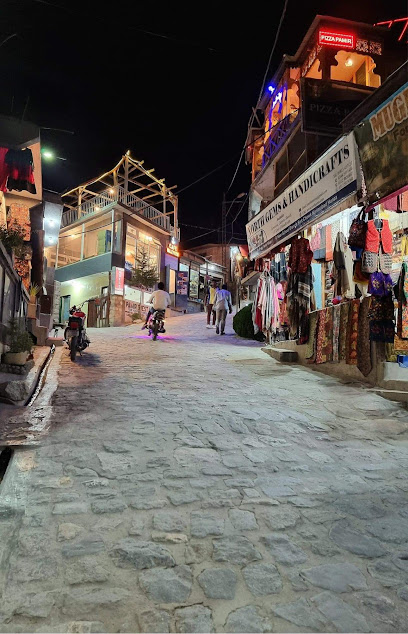
Hunza Chowk
Explore Hunza Chowk: A gift shop showcasing the exquisite artistry and cultural treasures of Gilgit-Baltistan, perfect for memorable souvenirs.

Gilgitbazar.com
Explore the exquisite gem collection at Gilgitbazar.com, where the beauty of Gilgit-Baltistan shines through every unique piece.

Factory Price Shop
Explore the Factory Price Shop in Gilgit for stylish clothing and unforgettable local fashion at incredible prices.
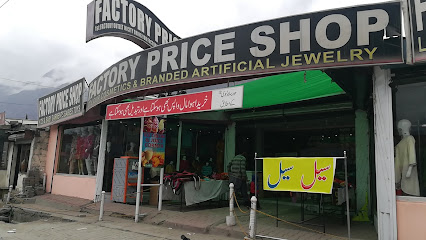
REBEL. Gilgit
Discover the essence of Gilgit-Baltistan's fashion at REBEL. Gilgit, where local style meets modern trends in clothing and jewelry.

hammad cloth house
Explore the vibrant clothing styles of Gilgit at Hammad Cloth House, where tradition meets modernity in exquisite textiles.

Arman Collection & Fashion Paradise
Explore the rich textile heritage at Arman Collection & Fashion Paradise, where tradition meets contemporary fashion in Gilgit.

Hunza Trade Link gilgit branch
Discover the essence of Gilgit's fashion at Hunza Trade Link, where tradition meets modern style in a vibrant clothing store.

Hunza Hand Skills
Discover the charm of handcrafted treasures at Hunza Hand Skills, a unique gift shop in the heart of Gilgit-Baltistan.
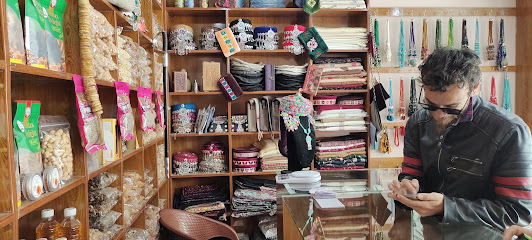
GilgitMart.com
Explore GilgitMart, the premier supermarket in Gilgit, where fresh local produce and international goods meet to enhance your travel experience.

Hangers
Discover trendy youth fashion at Hangers in Gilgit – your perfect stop for stylish clothing and accessories in the heart of Gilgit-Baltistan.

Malook General Store
Discover the essence of Gilgit-Baltistan at Malook General Store, your one-stop shop for local delicacies and everyday essentials.

Essential bars & hidden hideouts
Indus Lodges Gilgit
Experience exceptional dining and hospitality at Indus Lodges Gilgit, where local flavors meet breathtaking mountain views.

Paradise Hotel & Restaurant, Gilgit
Discover the perfect blend of local flavors and breathtaking views at Paradise Hotel & Restaurant, your culinary oasis in Gilgit.

The CherryTree Café
Experience the best of Gilgit's culinary scene at The CherryTree Café, where local flavors meet fast food favorites in a cozy setting.
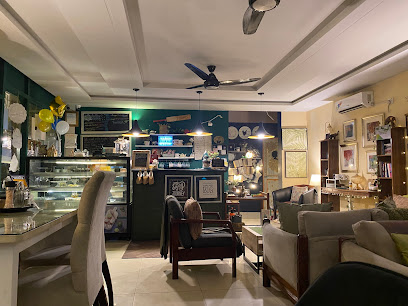
Duroyou Inn
Discover the perfect blend of fine dining and comfortable lodging at Duroyou Inn, your ideal retreat in the heart of Gilgit.

Chai Corner
Experience the authentic flavors of Gilgit at Chai Corner, where traditional tea and local delicacies unite in a cozy atmosphere.

Dawat Restaurant
Experience authentic Gilgit-Baltistan flavors at Dawat Restaurant, where delicious BBQ meets breathtaking views in a warm and inviting atmosphere.

The Food Corridor
Discover the authentic taste of Gilgit-Baltistan at The Food Corridor, where local flavors and diverse cuisines unite for an unforgettable dining experience.

Gilgit Food Yard
Discover the authentic taste of Gilgit-Baltistan at Gilgit Food Yard, where traditional Pakistani cuisine meets a welcoming atmosphere.

HAPPY HOUR
Experience the flavors of Gilgit-Baltistan at Happy Hour Restaurant, where every meal is a celebration of local cuisine amidst stunning mountain views.

GB STEAKHOUSE
Experience the rich flavors of Gilgit at GB Steakhouse, a premier destination for steak lovers and culinary enthusiasts alike.
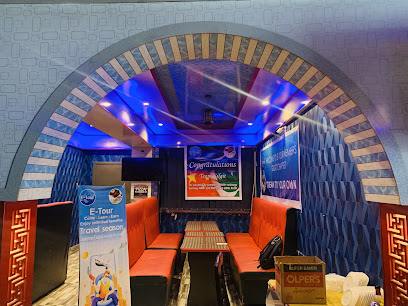
Marco Polo Coffee
Experience the best of local cuisine and coffee culture at Marco Polo Coffee in Gilgit, a delightful stop for every traveler.

The Coffee Shrine
Discover tranquility and exceptional brews at The Coffee Shrine in Gilgit, a beloved spot for coffee lovers and travelers alike.

Gilgit Hujra Restaurant
Discover the authentic taste of Gilgit-Baltistan at Gilgit Hujra Restaurant, where local flavors meet breathtaking river views.
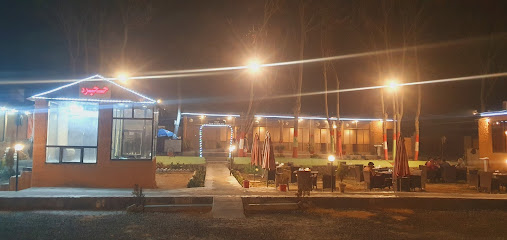
Chacha Chai Gilgit
Experience authentic Gilgit-Baltistan cuisine amidst stunning views at Chacha Chai Gilgit, your perfect dining spot in the heart of nature.

Cafe 1972
Discover the tastes of Gilgit-Baltistan at Cafe 1972, where local flavors meet international cuisine in a cozy atmosphere.

Local Phrases
-
- Helloسلام
[Salaam] - Goodbyeخدا حافظ
[Khuda Hafiz] - Yesہاں
[Haan] - Noنہیں
[Nahi] - Please/You're welcomeبراہ کرم
[Barah-e-karam] - Thank youشکریہ
[Shukriya] - Excuse me/Sorryمعذرت
[Mazrat] - How are you?آپ کیسے ہیں؟
[Aap kaise hain?] - Fine. And you?ٹھیک ہوں، آپ؟
[Theek hoon, aap?] - Do you speak English?کیا آپ انگریزی بولتے ہیں؟
[Kya aap angrezi boltay hain?] - I don't understandمجھے سمجھ نہیں آیا
[Mujhe samajh nahi aya]
- Helloسلام
-
- I'd like to see the menu, pleaseبراہ کرم مینو دیکھنا ہے
[Barah-e-karam menu dekhna hai] - I don't eat meatمیں گوشت نہیں کھاتا
[Main gosht nahi khata] - Cheers!خوش رہیں!
[Khush rahain!] - I would like to pay, pleaseبراہ کرم ادا کرنا ہے
[Barah-e-karam ada karna hai]
- I'd like to see the menu, pleaseبراہ کرم مینو دیکھنا ہے
-
- Help!مدد!
[Madad!] - Go away!چلے جاؤ!
[Chale jao!] - Call the Police!پولیس کو بلاؤ!
[Police ko bulao!] - Call a doctor!ڈاکٹر کو بلاؤ!
[Doctor ko bulao!] - I'm lostمیں گم ہو گیا ہوں
[Main gum ho gaya hoon] - I'm illمیں بیمار ہوں
[Main beemar hoon]
- Help!مدد!
-
- I'd like to buy...میں خریدنا چاہتا ہوں...
[Main khareedna chahta hoon...] - I'm just lookingمیں صرف دیکھ رہا ہوں
[Main sirf dekh raha hoon] - How much is it?اس کی قیمت کیا ہے؟
[Is ki qeemat kya hai?] - That's too expensiveیہ بہت مہنگا ہے
[Yeh bohat mehnga hai] - Can you lower the price?کیا آپ قیمت کم کر سکتے ہیں؟
[Kya aap qeemat kam kar sakte hain?]
- I'd like to buy...میں خریدنا چاہتا ہوں...
-
- What time is it?وقت کیا ہوا ہے؟
[Waqt kya hua hai?] - It's one o'clockایک بجے ہیں
[Ek bajay hain] - Half past (10)دس بجے نصف گزر چکے ہیں
[Das bajay nisf guzar chuke hain] - Morningصبح
[Subah] - Afternoonدوپہر
[Dopahar] - Eveningشام
[Shaam] - Yesterdayگزشتہ دن
[Guzishta din] - Todayآج
[Aaj] - Tomorrowکل
[Kal] - 1ایک
[Ek] - 2دو
[Do] - 3تین
[Teen] - 4چار
[Char] - 5پانچ
[Paanch] - 6چھے
[Chhe] - 7سات
[Sat] - 8آٹھ
[Aath] - 9نو
[Nau] - 10دس
[Das]
- What time is it?وقت کیا ہوا ہے؟
-
- Where's a/the...?کہاں ہے...
[Kahan hai...] - What's the address?پتہ کیا ہے؟
[Pata kya hai?] - Can you show me (on the map)?کیا آپ مجھے دکھا سکتے ہیں؟
[Kya aap mujhe dikhha sakte hain?] - When's the next (bus)?اگلی (بس) کب ہے؟
[Agli (bus) kab hai?] - A ticket (to ....)ایک ٹکٹ (سے ...)
[Ek ticket (se ...)]
- Where's a/the...?کہاں ہے...
History of Gilgit
-
Gilgit has been a crucial hub on the ancient Silk Road, serving as a key trade route between China and the West. Traders and caravans traveling along this route often passed through Gilgit, making it a melting pot of cultures, religions, and goods. The remnants of Buddhist stupas and petroglyphs in the region bear testimony to this vibrant interchange.
-
Gilgit is home to an extensive collection of rock carvings, some dating back to the 1st millennium BC. These carvings, found in various locations like Chilas and Hunza, depict scenes of hunting, religious motifs, and inscriptions in Kharosthi script. They provide a fascinating glimpse into the life and beliefs of the ancient people who lived here.
-
Discovered in the 1930s, the Gilgit Manuscripts are some of the oldest Buddhist texts in existence, dating back to the 5th to 6th centuries AD. These manuscripts, written in Sanskrit, offer invaluable insights into the religious and cultural practices of that era. They are currently housed in the National Archives of India, the British Library, and various other institutions.
-
For centuries, Gilgit was ruled by local chieftains known as Rajas. These rulers maintained a feudal system, with their power often contested by neighboring states and empires. The Rajas of Gilgit played a significant role in regional politics, engaging in alliances and conflicts with the rulers of Kashmir, Baltistan, and Chitral.
-
In the late 19th century, Gilgit came under British influence as part of the Great Game between the British and Russian Empires. The British established the Gilgit Agency in 1877 to counter Russian advances in Central Asia. This period saw the construction of strategic roads and forts, as well as the introduction of modern administrative practices.
-
Following the partition of British India in 1947, Gilgit became part of the newly formed Pakistan. The region has since experienced significant political and social changes, including efforts to integrate it more closely with the rest of the country. Despite these changes, Gilgit has managed to preserve its unique cultural heritage, making it a fascinating destination for travelers.
Gilgit Essentials
-
Gilgit is accessible via Gilgit Airport, which has daily flights from Islamabad. The flight offers stunning views of the Karakoram Range. Alternatively, you can take a bus or hire a private car to travel by road from Islamabad, which takes approximately 15-18 hours via the Karakoram Highway. During summer months, you can also travel via the Babusar Pass route, which is shorter but only open from June to September.
-
Gilgit has a variety of transportation options including taxis, vans, and motorbikes for hire. Public buses are available for intercity travel to nearby towns and valleys. Renting a car with a driver is a convenient option for tourists wanting to explore the region at their own pace. Bicycles can also be rented for local sightseeing within Gilgit city.
-
The official currency in Gilgit is the Pakistani Rupee (PKR). While some hotels and upscale restaurants accept credit cards, cash is the preferred mode of payment in most local businesses. ATMs are available but can be unreliable, so it's wise to carry sufficient cash. Currency exchange services are available at local banks and some hotels.
-
Gilgit is generally a safe destination but it is advisable to take standard precautions. Avoid walking alone at night and keep your valuables secure. Certain areas, especially those close to the Line of Control, have higher security risks and should be avoided. Always check travel advisories and stay updated on the local situation.
-
In case of emergencies, dial 1122 for immediate assistance. Gilgit has a hospital and several clinics for medical emergencies. It is recommended to have travel insurance that covers medical emergencies. Pharmacies are available for over-the-counter medications. For serious medical issues, air evacuation to Islamabad may be necessary.
-
Fashion: Do dress modestly. Avoid wearing revealing clothing. Religion: Do respect local customs, including removing shoes when entering mosques. Public Transport: Do be respectful and give up your seat to elderly passengers. Don't eat or drink on public transport. Greetings: Do greet people with 'As-Salamu Alaykum'. A handshake is common among men. Women may prefer a verbal greeting. Eating & Drinking: Do try local delicacies and accept food offerings graciously. Don’t refuse hospitality, as it is considered impolite.
-
To experience Gilgit like a local, visit the local markets such as the Gilgit Bazaar, where you can buy traditional handicrafts and local produce. Engage with locals, who are often friendly and eager to share their culture and history. Don't miss visiting the Kargah Buddha, a historic rock carving, and the scenic Naltar Valley for its beautiful lakes and skiing opportunities.
Trending Landmark in Gilgit
Nearby Cities to Gilgit
-
Things To Do in Naran
-
Things To Do in Skardu
-
Things To Do in Kaghan
-
Things To Do in Swat
-
Things To Do in Abbottabad
-
Things To Do in Chitral
-
Things To Do in Murree
-
Things To Do in Islamabad
-
Things To Do in Rawalpindi
-
Things To Do in Peshawar
-
Things To Do in Leh
-
Things To Do in Jammu
-
Things To Do in Sialkot
-
Things To Do in Gujranwala
-
Things To Do in Amritsar













